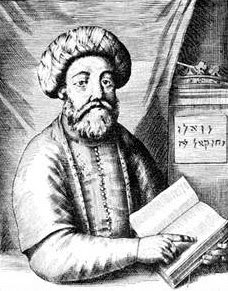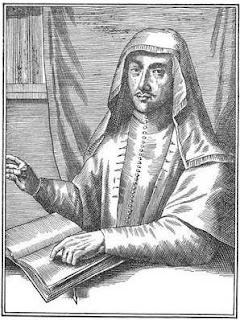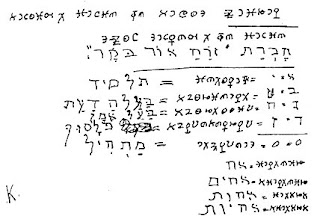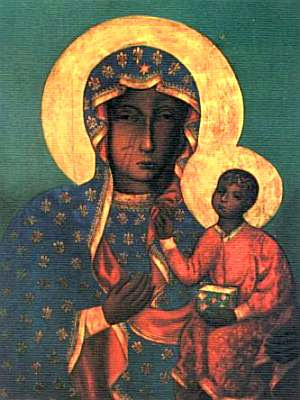lördagen den 4:e april 2009
The Sabbatian Qabalah and its relation to the Golden Dawn
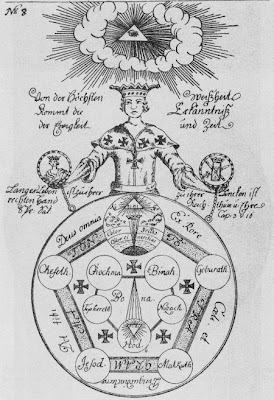
What follows is a lecture held in English and Swedish on March 28th, 2009, during the Convocation of the Adepti, which was held in Paris and arranged by the Ahatôôr Mother Temple No. 7 of the Rosicrucian Order of Alpha et Omega. The lecture itself was held at the time of the occasion of the Ahatôôr Temple Vernal Equinox Ceremony before members of all Grades of the Hermetic Order of the Golden Dawn.Before I commence with this lecture about the Sabbatian roots of the Golden Dawn, I would like to take the opportunity to extend warm and fraternal regards to all members of the Hermetic Order of the Golden Dawn on this vernal equinox, on behalf of all Scandinavian brothers and sisters.This vernal equinox of 2009 also celebrates the 10 year anniversary of the 1999 general reformation which follows the 111 year cycle of the Rosicrucian calendar. If we trace this cycle back in times of history we will find in 1888 the formation of the Hermetic Order of the Golden Dawn in England, by the grand reformers William Wyn Westcott and Samuel Liddell MacGregor Mathers. If we trace its roots even further back in time we find the formation of the Gold- und Rosenkreutz Orden in 1777, from which also the Asiatic Brethren grew out as a repository of Hermetic and Qabalistic teachings.
I will return to the subject of the Asiatic Brethren soon, but first I would like to take the opportunity to start off from the general reformation of 1666, which saw one interesting phenomena which directly relates to our subject matter, namely the advent and holy apostasy of the Qabalistic messiah Sabbatai Zevi.
Now, recent research has found that the origins of the Qabalistic tradition of the Golden Dawn has strong Sabbatian connections which probably derives from the Asiatic Brethren, which in turn received its Qabalistic transmission from the peculiar version of Jacob Frank’s Sabbatian Qabalah, centered in Poland. One can easily see a development or lineage here from Isaac Luria, through Sabbatai Zevi (and his prophet Nathan of Gaza) to Jacob Frank. This “lineage”, or rather “esoteric transmission”, continues to this day through the Golden Dawn!
In my opinion there exists quite convincing proof which substantiate this “esoteric transmission” from the Frankist Qabalah into the Golden Dawn. Reading the first folio page of the Golden Dawn Cypher Mss. you will find the words “Chevrah Zerach Aur Bequr” in Hebrew. Now, Gershom Scholem was one of the first modern scholars to identify a Jewish Freemasonic lodge in Frankfurt-am-Main called Lodge L’Aurore Naissante that also went by its Hebrew name of Chevrah Zerach Bequr Aur! These Hebrew words translate to “The Society of the Rising Light of Dawn”. It is a well-known fact that prominent members of the Asiatic Brethren were involved in the creation of this Jewish lodge in 1807, and that it became the heir to the tradition of the Asiatic Brethren.
But who were the Asiatic Brethren or the Fratres Lucis as they were also called? Well, they were basically a splinter group of the Gold- und Rosenkreutz which, as with the former organization, blended Hermetic and Qabalistic notions into a coherent Rosicrucian philosophy. But as the Gold- und Rosenkreutz seemed to lay a greater emphasis on Hermeticism and Alchemy, the Asiatic Brethren on the other hand laid more emphasis on Qabalah and Magic. One other great difference between these two organizations was that the Gold- und Rosenkreutz, in vogue with mainstream German Freemasonry, was restricted to Christians. The Asiatic Brethren on the other hand permitted both Christians and Jews as members. Amongst these Jewish members figured followers of the Sabbatian Qabalist Jacob Frank, such as Ephraim Hirschfeld and Thomas von Schönfeld (whose real name was Moses Dobrucshka). It should also be noted that Moses Dobruschka was the cousin of Jacob Frank.
So, on one hand we have a clear association between the Sabbatian-Frankist Qabalah and L’Aurore Naissante, through the Asiatic Brethren, and on the other a link between L’Aurore Naissante and the Golden Dawn through the mysterious Cypher Mss. I believe the most plausible intermediary between Frankfurt-am-Main of 1807 and London of 1888 to be non other than Kenneth MacKenzie, who received his Rosicrucian esoteric transmission by the hand of Count Apponyi in 1850. It is more or less an established fact that the Cypher Mss. were written in MacKenzie’s own handwriting.
Our Order has evidence in its archives which shows that many concepts and practices within the Golden Dawn have a strikingly Sabbatian resemblance, inherited from the German Rosicrucian movement of the 18th Century, as for example some Golden Dawn wand designs, which according to Mr. Jean-Pascal Ruggiu, was inspired by a Gold- und Rosenkreutz document which, interestingly enough – and I quote – “contains strong Polish Jewish Qabalistic influences, and especially those coming from the school of Sabbatai Zevi”.
Now, as we have established the fact that there actually exist an esoteric transmission between the Sabbatian Qabalah and the Golden Dawn, we should ask ourselves in which ways this school of thought has survived to this day through the Golden Dawn. First and foremost, I would say, this can be discerned by the non-dogmatic approach towards spirituality, as the Sabbatian Qabalah is very antinomian in its nature and vehemently revolts against religion, especially amongst the teachings of Jacob Frank who regarded organized religion as the Shells (or Qlippoth) who entrapped God.
So it was the task of the pious Jewish Qabalist, according to Frank, to convert to Christianity (which he referred to as the sons of Esau; or the Edomite Kings) and therewith free the divine sparks from its imprisonment. This act of apostasy (in the eyes of the Jewish population) was in fact inspired by the so called “Holy Apostasy” by Sabbatai Zevi, who converted to Islam at sword point in 1666, forced by the Turkish sultan Mehmed IV, comparing it to the descent into the mouth of Samael (or Satan).
Later, Sabbatai Zevi created a following amongst the Turks, called the “Donmeh” (which is Turkish for “convert”). Jacob Frank was in fact initiated into the Sabbatian Qabalah by the Turkish Donmeh, before he entered his missionary life in Poland. So what we see here in Sabbatianism is an urge to unite all abrahamic religions into a coherent whole. As a matter of fact, the later Frankist movement tried to institute a new form of universalistic messianic religion and considered Christianity as an intermediate stage towards it, with Jacob Frank himself as the next avatar or reincarnation of the Messiah Sabbatai Zevi.
These universalistic tendencies could later bee seen in the Asiatic Brethren who “baptized” its Jewish members with Christian names and gave its Christian brethren Hebrew sounding names. This perennial tendency within the Sabbatian-Frankist Qabalah has survived with the Golden Dawn, which blends many different western religions and pantheons into a coherent whole. Furthermore, the Asiatic Brethren also celebrated both Christian and Jewish holidays, and therefore incited the Jewish followers to break Hebrew law, as for example eating pork with milk. This was clearly an antinomian practice that surely was inherited from the teachings of Jacob Frank through people like Moses Dobruschka.
Obviously Frankist Qabalah blends very well with the Hermetic Rosicrucian tradition because of its strong ties with Christianity. As a matter of fact Jacob Frank and his followers adored the Holy Mother – Virgin Mary – The Virgin of Czestochwa or Black Madonna of Poland, which Frankists associated with Shekhinah. The cult of the Black Madonna is a form of a worship of the Divine Feminine, and we know that Jacob Frank was a devout worshiper of the Divine Feminine, which is easily discernable in one of his sayings: “In a dream in Częstochowa I saw the Goddess who came to me appearing as a beautiful virgin”.
All of this makes a very interesting connection to the diagram of Garden of Eden Before the Fall, taken from the Grade of Practicus, and the angelic female figure surmounting this diagram. This image expresses the divine feminine – within the Qabalah referred to as Aima Elohim, which may be translated as “the Mother of God”. She directly corresponds to the Women of the Apocalypse from the 12th Chapter of the Book of Revelation.
 Aima Elohim as an image of the Woman of the Apocalypse
Aima Elohim as an image of the Woman of the Apocalypseand the representation of the Virgin Mary – Mother of God
The Frankists, following through their antinomian mission, also engaged in sexual practices. This can of course be understood in the light of the Cult of the Black Virgin, and the Sabbateian doctrine of Sexual Polarity, unto which I will return in a moment. Not shunning sexuality but on the contrary openly encouraging it, they also embraced other similar sins, not as “sinners” but as “saints”, so to speak, to free the sin (the spark of God from the Qlippotic Shell) through indulgence – or perhaps “integration” as some of us would prefer to call it today.
But we have to remember that Sabbatian Qabalah follows the teachings of Isaac Luria where matter is suspended in a fallen state, mixed up as it is with the Qlippoth – the shells or husks from the first and aborted creation – which gives matter its characteristics as it is known to us today. The goal is restoration, or Tikkun ha-Olam, which means that matter is submitted to an alchemical process of separation of the gross (the Qlippoth) from the fine and the creation of a new Eden and a New Adam or Christ. Lurian, as well as Sabbatian and Frankist Qabalah, is unanimous in its message that the spark of God which is entrapped within the shells (Qlippoth) must become liberated – redeemed – for this restoration to occur.
But the truly unique development and clearly antinomian aspect of Sabbatian Qabalah is the concept of a “divine ambivalence”, even on the level of Ain-Soph. Ain-Soph, according to Nathan of Gaza, consists of two kinds of lights, the “thoughtful” and the “thoughtless”. The former is in favour of creation, the latter tries to hinder it and conserve the original state of blissful “nothingness”. This latter “light” is “thoughtless” because it lacks the image necessary for creation. The tzimtzum (or retraction) – which created cosmos out of chaos – occurred within the “thoughtful light”, which through its creative intention was able to emanate its light towards the first monad of Kether. But as a result of all this the “thoughtless light” also was dragged down in the process of creation that because of its limiting nature tried to prevent it. This created the dialectics between a positively creative force and a destructive power. These two conflicting divine intentions of the Macrocosm, which also is reflected in the Microcosm, manifests as the two Pillars of Qabalah, which in the Golden Dawn are painted as black and white to further their polarity and association with the two kinds of lights.
 The thoughtless and thoughtful lights as symbolized by
The thoughtless and thoughtful lights as symbolized bythe two pillars on the Tree of Life as shewn on the
Diagram of the Garden of Eden before the Fall
Nathan of Gaza also originated the concept of the infernal abyss filled with serpents, set out to destroy creation, also in Zoharic terms called Sitra Ahra (or “the Other Side”), the world of shells or Qlippoth, situated below the Supernals on the Tree of Life, in which the thoughtless light resides. This clearly refers to the Red Dragon symbolism of the Golden Dawn, which can be seen in the Diagrams the Garden of Eden Before and After the Fall (from Practicus and Philosophus Grades respectively).
The Red Dragon is also to be found on the floor of the Vault of Adepti. Reading the teachings of the Golden Dawn regarding the Red Dragon one becomes struck with the controversial contents of its antinomian teaching, where the goal of the Adept is to ride upon the back of the Dragon, harness the forces of “evil” and gain strength therefrom. This concept also has its equivalent in the Zoharic concept of “The Rider of the Serpent”.
The Golden Dawn teachings concerning the Fall and the Garden of Eden concerns the process which leads to the “breaking of the vessels”. Note that the diagram of the Garden of Eden after the Fall depicts the Three of Life in the form of a cross, which only contains the seven lowest Sephiroth and Daath (which indicates the centre of the cross), and at the mercy of the Read Dragon. According to Nathan of Gaza, the only part of the Three of Life which is saved from the attacks of the Dragon, is the Supernal which is symbolized by the great circle, because of it being protected by the four (Elemental) Cherubim and the Flaming Sword which God placed there for the protection of the Garden. According to Nathan, this is the place of the “thoughtful light” on the Tree of Life.
According to Nathan the creation below the abyss is in a hopeless condition that only can be restored by a Messianic figure. This is a reference to the New Adam in the philosophy of the Golden Dawn, which is said to be able to reclaim his throne in Tiphareth and rule with his Rod of Iron, a clear reference to the 12th Chapter of the Book of Revelation. The Messiah is the offspring of the fatherly Chokmah (Wisdom) and the motherly Binah (Understanding) – Abba and Aima, the “thoughtful light” and the “thoughtless light” respectively. Together they beget the created world within the Abyss but also its redeemer – the Messiah – that can be seen as being represented by Daath (Knowledge).
Daath is both involved with the Fall but simultaneously also constitutes its highest point and the intermediary between the Supernal Triad and the fallen universe. Messiah, according to Nathan, stands above the law of Torah and cannot be judged by the common criteria of morality concerning what is good and what is evil. As the redeemer of the fallen world, and the intermediary link between that what is above and that what is below the Abyss, he must also be a part of its fallen condition. Nathan explains that the soul of the Messiah, as well as ours, constitutes both the “thoughtless light” and the “thoughtful light”. In his mission he cleanses and redeems the fallen ones, but becomes himself unclean and fallen in the process. He is according to Nathan “the holy serpent” which subdues the “serpents of the abyss”, which reminds us of the numerical concordance between the word mashi’ah (the anointed) and nahash (serpent).
 The Messiah subduing the serpent of the infernal abyss
The Messiah subduing the serpent of the infernal abyssas shewn on the lid of Pastos in the Vault of the Adepti
and the Adeptus Minor Grade
Now, this brings us to the sixth Sephirah of Tiphareth, which has a central position in both the Sabbatian doctrine as in the Golden Dawn. As you all know, it’s a reference to Zaur Anpin (Microprosopus), which by Nathan was conceptualised as Malkah Qadisha, or “the Holy King” – in his aspect as united with his Queen; the Shekinah. It is also called the God of Faith by Nathan.
Nathan speaks of the scorch of Tiphareth or the light of Ilana Yaqira (the precious tree at the level of Atziluth, the highest of Qabalistic Worlds), created by the harmonious union of the thoughtful light and the thoughtless light. This union is considered necessary, since the thoughtless light has the powers of creation, whereas the thoughtful light, in spite of its desire to create, is impotent, and has to employ the creative forces of the thoughtless light. This light of the God of Faith is then emanated downwards through the other three Qabalistic Worlds, being part of the Abyss of Serpents. This emanated force is called Mana Yaqira and is used by the thoughtful light to subdue the Serpents. This light also incarnates in the Messiah, elevating him to a Godhead – The God of Faith. As a matter of fact, Nathan explained off Sabbatai Zevi’s manic depressive disorder in these terms; that he in his own person united both the “Thoughtful” and the “Thoughtless” lights, the former being the manic phases while the latter marking the depressive states of the Messiah. Comforting to hear – for all of us bipolars.
Lastly we find in the Frankist Qabalah also the notion of Ma’asah Dumah (The Work of Silence) which has a clear relationship to the Godform of Harpocrates – the God of Silence of the Golden Dawn and also of Freemasonry. So, now, what can we learn from the Sabbatian and especially the Frankist tradition and position? Simply speaking, that the Golden Dawn neither is nor ever should become a religion.
The Golden Dawn is a spiritual science and art, which makes use of certain religious symbols, predominantly Christian. But it has nothing to do with religious dogma. Adepts of our tradition should always maintain the integrity of spiritual independence towards organized religion. But at the same time we must remember the admonition of the Neophyte Grade to revere ALL religions as containing a spark of spiritual truth. No religion is truer than the other. No religions, of whatever flavour, can ever contain the whole truth about God.
To truly see God we must forsake religion, to see beyond the mental projections of common man that governs the consensus image of Him; man in fact has created God into his own image. He was created out of mans fear of punishment and out of guilt. To see God we must let go of all preconceived notions about His true nature. We must let go of all guilt and the cultural consensus ideas about the nature of sin. We must embrace god as children, pure and undefiled – mentally and spiritually speaking. This is the true significance of Sabbatian antinomianism.
S∴R∴

